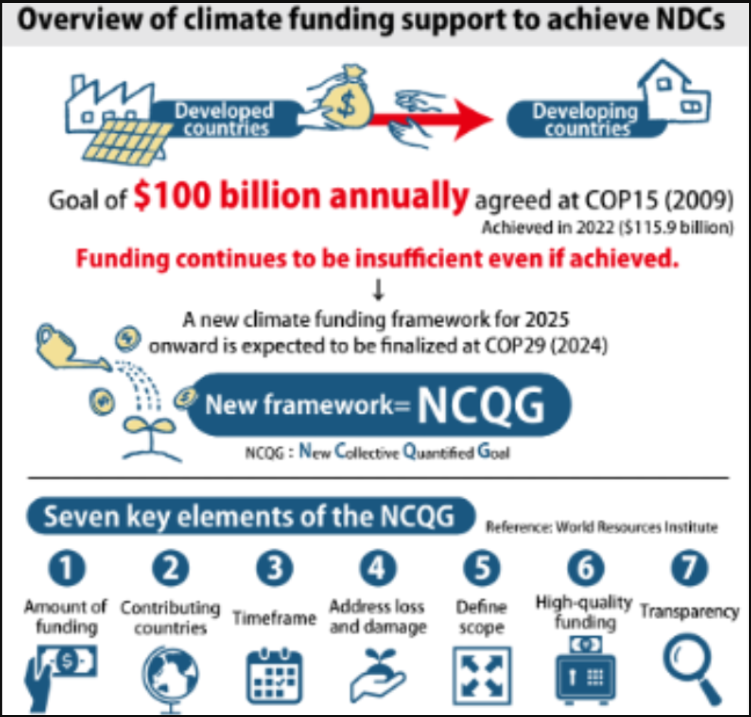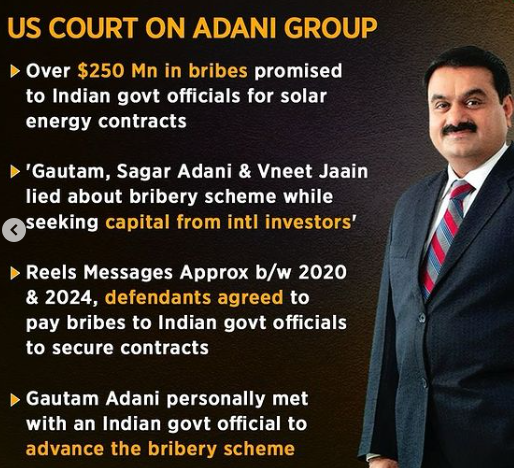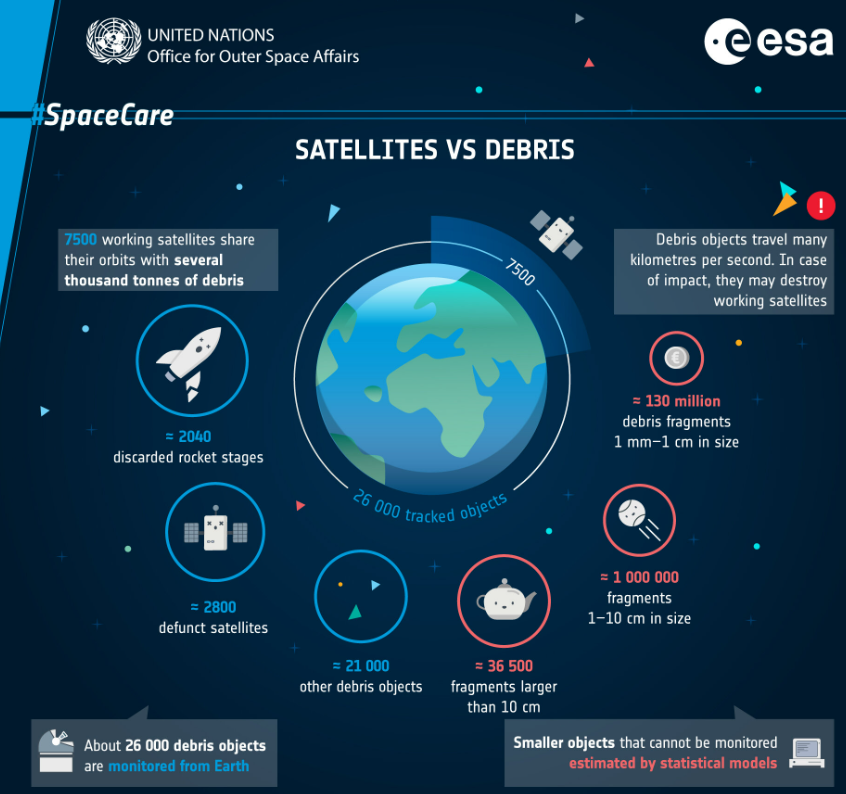25 November 2024 : Daily Current Affairs
1. Global Push to End Plastic Pollution: Nations Meet in Korea for Final Treaty Negotiations
(Source: Indian Express; Section: Explained; Page: 12)
| Topic: GS3 – Environment |
| Context: |
| The article discusses the ongoing negotiations among 170 nations to finalize a legally binding global treaty to combat plastic pollution and its environmental and health impacts. |
Analysis of News:
The Need for a Global Plastic Treaty
- Plastic, a versatile and indispensable material, has led to a mounting global crisis. Its annual production surged from 234 million tonnes (mt) in 2000 to 460 mt in 2019 and is expected to reach 700 mt by 2040.
- With only 10% of plastic waste recycled, most of it ends up polluting rivers and oceans or breaking down into harmful microplastics.
- Beyond environmental degradation, plastics are linked to severe health issues such as cancer and endocrine disruption.
- Furthermore, plastic production contributes to 3.6% of global greenhouse gas emissions, exacerbating climate change.
Goals of the Negotiations
The treaty aims to create a globally binding framework to tackle plastic pollution across its lifecycle, including production, disposal, and recycling. Discussions include:
- Production Caps: Proposals to limit plastic production have faced resistance from oil and gas-producing nations.
- Ban on Specific Plastics: Potential prohibitions on harmful plastics, additives, and single-use items.
- Just Transition: Support for communities and workers dependent on plastic-related industries.
- Recycling Targets: Binding rules to enhance recycling rates and promote the use of recycled content.
Divergent National Positions
- Oil and Gas Producers: Nations like Saudi Arabia, Iran, and India oppose strict mandates on production caps, favoring downstream waste management solutions.
- Proactive Advocates: Countries like Rwanda, Peru, and the European Union support ambitious reduction targets, including a 40% cut in plastic waste by 2040.
- Financial Disputes: Consensus on financing mechanisms remains elusive, with calls for increased private and public sector collaboration.
India’s Stance
India has resisted production caps, emphasizing pragmatic, nation-driven regulations. While it banned 19 single-use plastic items in 2022, India advocates for:
- Financial and Technical Assistance: Inclusion of support mechanisms for waste management and technology transfer.
- Scientific Assessments: Domestic regulation of harmful chemicals based on scientific studies.
- Infrastructural Support: Establishing frameworks to assess and finance waste management infrastructure.
Conclusion
- As the fifth and final round of negotiations convenes, the global plastic treaty represents an urgent step toward addressing plastic pollution.
- However, bridging the divide between ambitious targets and economic interests will be crucial for a successful, equitable, and enforceable agreement.
| Understanding Plastic Pollution |
|
Plastic pollution is a global crisis that threatens our environment, health, and future. It can alter habitats and natural processes, reducing ecosystems’ ability to adapt to climate change, directly affecting millions of people’s livelihoods, food production capabilities, and social well-being. Life-cycle approach: It refers to all the potential impacts associated with the production and consumption of plastics, including raw material extraction and processing, design and manufacturing, packaging, distribution, use and reuse, maintenance and end of life management, including segregation, collection, sorting, recycling, and disposal. Single-use plastics: These include polyethylene shopping bags and polystyrene food containers as well as the PET (polyethylene terephthalate, a form of polyester) drinks bottle Today around 500 billion PET drinks bottles are sold every year, the majority of which end up in the ocean. Microplastics: These are tiny shards of plastic that come from a variety of sources, including tyres, health and beauty products, synthetic fabrics, artificial turf, lost or discarded fishing fear and leakage from industrial manufacturing and agricultural processes. |
| Practice Question: Discuss the significance of a global treaty to address plastic pollution and analyze the challenges in achieving consensus among nations on production caps, waste management, and financial mechanisms. (250 words/15 m) |
2. International Cooperative Alliance
(Source – https://pib.gov.in/FeaturesDeatils.aspx?NoteId=153448&ModuleId+=+2®=3&lang=1 )
| Context |
|
About the International Cooperative Alliance (ICA)
- Founded in 1895 in London, the ICA is the apex body for the global cooperative movement.
- It represents over 1 billion cooperative members and 3 million cooperatives worldwide, advocating for their interests.
- With 306 member organisations from 105 countries, ICA promotes collaboration, knowledge sharing, and cooperative-friendly policies.
- The ICA operates across sectors such as agriculture, banking, consumer goods, fisheries, health, housing, insurance, and industry.
Establishment of ICA Asia-Pacific (ICA-AP)
- ICA expanded to the Asia-Pacific region in 1960, establishing its Regional Office and Education Centre in New Delhi, India.
- This was influenced by Dr. G. Keler’s 1957 exploratory tour across Asian countries to assess cooperative development needs.
- The initiative emphasized cooperation as a tool for social and economic development in underdeveloped regions.
- The ICA’s 19th Congress in 1954 passed a resolution urging established cooperatives to support developing nations.
India’s Role in ICA-AP Development
- Jawaharlal Nehru inaugurated the ICA Regional Office in 1960, reinforcing its alignment with India’s rural development goals.
- The office evolved into a unified institution in 1963, later renamed ICA Asia-Pacific (ICA-AP) in 1990 to reflect its broader mandate.
- India’s geographical location and commitment to cooperative principles made it the ideal host for ICA-AP.

Governance Structure of ICA-AP
- Regional Assembly: The highest policymaking body where all member organisations participate.
- Regional Board: Supports the implementation of policies from the Regional Assembly.
- Sectoral and Thematic Committees: Focus on agriculture, finance, housing, and sustainable development.
- India has played a pivotal role in shaping these structures and ensuring cooperative growth.
India’s Cooperative Movement
- Rooted in the principle of Vasudhaiva Kutumbakam (The world is one family), India’s cooperatives empower marginalised communities and promote rural development.
- In 2021, the Ministry of Cooperation was established to strengthen cooperatives across sectors.
- Types of cooperatives in India include consumer, producer, marketing, credit, farming, and housing cooperatives.
2024 ICA Global Conference
- For the first time, the ICA Global Conference will be held in India, with the theme “Cooperatives Build Prosperity for All.”
- The event underscores India’s leadership in fostering inclusive growth through the cooperative model.
Conclusion
- India has been instrumental in ICA-AP’s growth, advocating for the cooperative movement regionally and globally.
- Its commitment to cooperatives continues to serve as a model for social and economic development.
| Practice Question: Cooperatives are essential for fostering inclusive growth and empowering marginalised communities. Discuss the role of cooperatives in promoting rural development and socio-economic equity. (250 Words /15 marks) |
3. Climate deal a mere illusion, says India
(Source – The Hindu, International Edition – Page No. – 5)
| Context |
|
Adoption of a Weaker Road Map
- COP29, held in Baku, Azerbaijan, concluded with a “road map” focusing on initiating UN-approved carbon markets.
- The conference failed to meet its primary goal of finalising a New Collective Quantified Goal (NCQG) on climate finance.

Climate Finance Agreement
- A deal was reached to mobilise $1.3 trillion annually by 2035, with developed nations committing to lead by pooling $300 billion annually as a base.
- The NCQG involves financing from developed to developing countries to support the transition away from fossil fuels.
- In 2021-22, developed nations reportedly mobilised $115 billion, far short of the demands of developing nations.

India’s Strong Opposition
- India opposed the financial package, calling it an “optical illusion” and insufficient to address global challenges.
- The Indian delegation criticised the process, alleging stage-managed discussions and lack of transparency by COP29 leadership.
- Nigeria supported India’s stance, terming the agreement a “joke.”
Carbon Market Agreements
- COP29 achieved consensus on carbon markets, potentially accelerating countries’ climate goals.
- These agreements aim to reduce global emissions by half within this decade, as per scientific recommendations.
Challenges and Criticism
- The $300 billion target is deemed inadequate given the mitigation and adaptation needs of the developing world.
- Critics cite the agreement as reflective of geopolitical challenges, undermining collective climate action.
Future Goals
- Stronger Nationally Determined Contributions (NDCs) are required by 2025, covering all greenhouse gases and sectors.
- The outcomes demand renewed efforts to ensure climate goals remain on track.
| PYQ: Describe the major outcomes of the 26th session of the Conference of the ParSes (COP) to the United NaSons Framework Convention on Climate Change (UNFCCC). What are the commitments made by India in this conference? (250 words/15m) (UPSC CSE (M) GS-3 2021) |
| Practice Question: Critically analyse the significance and shortcomings of the New Collective Quantified Goal on climate finance adopted at COP29. How can developing nations ensure equitable climate financing? (150 Words /10 marks) |
4. Why has Gautam Adani been indicted?
(Source – The Hindu, International Edition – Page No. – 10)
| Context |
|

Indictment and Allegations
- Federal prosecutors in New York indicted Adani Group Chairman Gautam Adani, his nephew Sagar Adani, and six others on November 21 for multiple counts of fraud.
- Allegations include a multibillion-dollar bribery scheme to secure favourable solar power contracts, involving over $250 million in bribes to Indian officials.

Details of the Case
- The case centres around a 2019 solar tender by Solar Energy Corporation of India (SECI), awarded to Adani Green Energy and Azure Power.
- Bribes were allegedly paid to state officials in Odisha, Andhra Pradesh, Tamil Nadu, Chhattisgarh, and Jammu and Kashmir to ensure agreements at above-market rates.
- Gautam Adani is accused of personally offering a ₹1,750 crore bribe to a high-ranking official in Andhra Pradesh.
Charges and Legal Context
- The charges include violations of the Foreign Corrupt Practices Act (FCPA), securities fraud, and wire fraud.
- The defendants allegedly concealed these violations to secure over $3 billion in loans and $175 million from U.S. investors.
- Messaging apps, code names, and PowerPoint presentations were reportedly used to track bribes, with attempts to delete incriminating evidence.
| Foreign Corrupt Practices Act (FCPA) |
|
Enactment: Passed in 1977 by the United States to address corruption in international business dealings. Purpose: Prohibits U.S. companies and individuals from bribing foreign officials to gain business advantages. Jurisdiction: Applies to U.S. companies, citizens, residents, and foreign entities listed on U.S. stock exchanges. Key Provisions: Anti-Bribery: Prohibits payments or offers to influence foreign officials. Accounting Standards: Mandates accurate financial records and internal controls. Penalties: Includes hefty fines, imprisonment, and disqualification from government contracts. Global Impact: Influences corporate compliance practices and deters cross-border corruption. |
Civil Lawsuit and Consequences
- The U.S. SEC filed a parallel civil lawsuit for misleading investors and bribing officials.
- Potential penalties include financial fines and bans from executive roles in U.S.-regulated companies.
Impact on Adani Group
- The indictment led to the cancellation of a $600 million bond sale and sharp declines in Adani Group share values.
- Kenyan authorities cancelled major deals with the Adani Group, including a $736-million energy project.
Next Steps
- The case will move to an arraignment stage, followed by a jury trial or potential settlement with U.S. authorities.
| Practice Question: Examine the implications of international anti-corruption laws like the U.S. Foreign Corrupt Practices Act (FCPA) on Indian businesses operating globally. Discuss the role of ethical governance in mitigating such risks. (150 Words /10 marks) |
5. Countries vulnerable to climate tense over ‘exported emissions’
(Source – The Hindu, International Edition – Page No. – 12)
| Topic: GS3 – Environment |
| Context |
|
Focus on Fossil Fuel Exports at the Baku Climate Conference
- The 2024 United Nations climate conference in Baku addressed calls to hold nations accountable for pollution caused by their exported fossil fuels.
- Activists and delegates from climate-vulnerable countries emphasized the need to include this issue in future climate agendas.
Loophole in the Paris Agreement
- The 2015 Paris Agreement mandates countries to set emission reduction targets and report progress for domestic greenhouse gases.
- However, it excludes emissions from fossil fuels exported overseas, allowing exporting nations to evade accountability for such emissions.
| What Are ‘Exported Emissions’? |
|
Exporting Nations and Their Impact
- Countries like the U.S., Norway, and Australia claim progress in achieving international climate goals while significantly increasing fossil fuel exports.
- U.S. fossil fuel exports caused over 2 billion tonnes of CO₂-equivalent emissions in 2022, roughly a third of its domestic emissions.
U.S. Leadership in Fossil Fuel Production
- A drilling boom has established the U.S. as the world’s top oil and gas producer.
- U.S. coal exports have grown for four consecutive years, driven by strong demand.
Export Emissions Exceed Domestic Emissions for Some Countries
- Exported emissions surpassed domestic emissions for Norway, Australia, and Canada in 2022.
- Norway’s climate ministry argued that each nation should manage its own carbon footprint.
Global Fossil Fuel Trade Dynamics
- U.S. gas exports primarily go to Europe, while China is a major buyer of U.S. crude and coal.
- North Africa, particularly Egypt and Morocco, has become America’s largest growth market for coal.
- In the first half of 2024, U.S. coal exports reached 52.5 million short tonnes, with Egypt and Morocco importing over 5 million short tonnes for cement and brick production.
| Practice Question: The exclusion of exported fossil fuel emissions from global climate agreements undermines efforts to combat climate change. Discuss the challenges this poses for accountability and global equity, and suggest measures to address the issue. (150 Words /10 marks) |
PRELIMS FACTS
1. Rising Satellite Pollution: A New Threat to the Ozone Layer and Atmospheric Balance
(Source: Indian Express; Section: Explained; Page: 12)
| Context: |
| The article highlights the growing threat of atmospheric pollution caused by the increasing number of satellites and their impact on the ozone layer and Earth’s environment. |
Analysis of News:

Increasing Satellite Pollution
- The surge in satellite numbers is driving a new form of atmospheric pollution.
- With over 10,000 active satellites today, projections estimate this number to exceed 100,000 by the 2030s, potentially reaching half a million in later decades.
- Most satellites burn up during reentry, releasing aluminum, nitrogen oxides, and other pollutants into the upper atmosphere.
- Rocket launches also contribute to this pollution, emitting black carbon, carbon monoxide, and chlorine gases, significantly altering atmospheric composition.
Environmental Impact
- Pollutants from satellite disintegration pose a growing threat to the Earth’s ozone layer, which shields life from harmful ultraviolet radiation.
- Aluminum oxide, released during satellite burn-ups, accelerates ozone depletion, undermining decades of progress under the Montreal Protocol.
- Additionally, black carbon and metals like copper absorb solar energy and catalyze chemical reactions, disrupting atmospheric chemistry and cloud formation, with potential ripple effects on global weather patterns and ecosystems.
Implications for Life on Earth
- The introduction of pollutants into the stratosphere could have cascading impacts on Earth’s delicate environmental balance.
- Changes in atmospheric chemistry may destabilize ecosystems, threaten biodiversity, and intensify climate change effects.
- Given humanity’s reliance on a stable atmosphere, even minor disruptions could result in significant long-term consequences.



